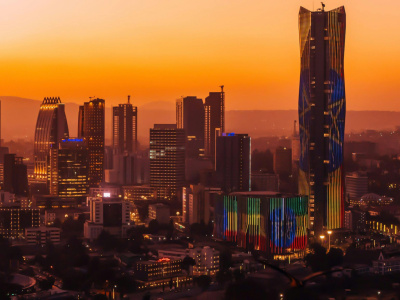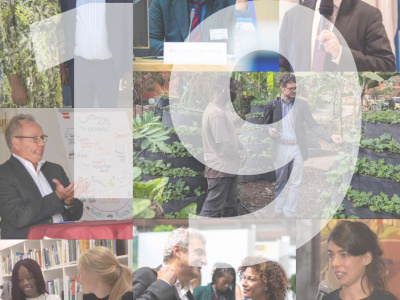
The Remaining Challenge of Job Creation in South Africa
In spite of significant economic achievements, unemployment, together with poverty and inequality, remain persistent challenges in South Africa.
South Africa (SA) is a middle-income, emerging market with an abundant supply of natural resources; well-developed financial, legal, communications, energy, and transport sectors. It has a GDP superior to that of Denmark, Finland, Portugal and Ireland in nominal terms but levels of poverty comparable to Cameroon, Nicaragua and Georgia. It is a country of many contradictions in many respects, one in which a sophisticated road transport network connects rich affluent suburbs to backward underdeveloped settlements (shanty towns). The range of challenges faced are enormous, including the fact that too few people work, that the standard of education for most black learners is of poor quality, infrastructure is poorly located, under-maintained and insufficient to foster higher growth, spatial patterns exclude the poor from the fruits of development, the economy is overly and unsustainably resource-intensive, a widespread disease burden is compounded by a failing public health system, public services are uneven and often of poor quality, corruption is widespread and South Africa remains a divided society (1). The triple challenge of poverty, inequality and unemployment needs immediate intervention. A quarter of the population is unemployed; that number increases to 35% when including people who have given up looking for work (2). South Africa's economic policy has focused on controlling inflation, however, the country has had significant budget deficits that has restricted its ability to deal with its pressing economic problems. The creation of decent employment remains top on the agenda of the South African government and one area for which an informed contribution from external partners will certainly be value adding.
The challenge of persistent high unemployment in South Africa
A lot has been written about the historical origins of the unemployment problem in South Africa, its racial configuration and geographical distribution (3), but there is no consensus around the causes of its persistence and even increase almost two decades into the democratic South Africa. There is even less certainty about the exact intervention measures needed to reverse this pattern and bring the country to levels of employment consistent with comparative middle income countries of the status of South Africa. Factors identified to explain the persistent mass unemployment include: an insufficiency in the rate of output growth, a declining labour intensity of production in the formal economy, and the rigidity of South Africa’s labour market (4). Rigidity is accentuated by well organised and politically connected trade union federations that defend the rights of existing workers and makes radical policy reforms to labour market legislation a potentially politically costly venture to any incumbent government. In addition, there is a mismatch between the skills of the unemployed and the needs of the sectors and industries contributing the most to the growth of the country’s total output. These challenges have adequately been acknowledged by the South African government in their strategic policy documents (5).
However, agreeing on and implementing recommendations to address the complex nature of the unemployment problem in South Africa has proven difficult, in part as a result of South Africa’s complex society and multifaceted political dynamics that emerged from its fight against apartheid.
South African Government employment creation initiatives
In order to eliminate poverty and reduce inequality, the economy must not only become more inclusive but also grow faster. South Africa’s ‘New Growth Path’ framework (6) sets a target of creating five million new jobs by 2020, by providing a supportive environment for growth and development, while promoting a more labour-absorptive economy. As a long term plan, the government intends to create 11 million jobs by 2030 by inter alia: realising an environment for sustainable employment and inclusive economic growth, promoting employment in labour absorbing industries, raising exports and competitiveness, strengthening government’s capacity to give leadership to economic development and mobilising all sectors of society around a national vision. Sustainable growth and development will require higher savings, investments and export growth. Yet, the policies that drive growth are not always good for employment and vice versa. Consequently, the government plans to focus the country’s efforts on growing exports and building the linkages between export earnings and job creation which often occur in domestically focused small-and medium sized firms and most often in the service sector.
Development Partnership in employment creation
How and where could the involvement of the broader development community add value to the ongoing efforts of the South African government? South Africa’s development partners - notably Brazil, Russia, India and China (BRIC) and the EU - could weigh in by means of experience sharing, knowledge transfer, training and technical assistance, based on their own experience of dealing with the problem of unemployment. Financial assistance could also be provided in the form of budget support programs, a preferred modality by South Africa. For a country with the only Strategic Partnership with the European Union on the African continent and one for whom total overseas development assistance (ODA) makes up less than 1% of its GDP and not often included in the national budget, the impact factor of external assistance is not in heavy weight lifting as in other African countries but in surgical specific interventions that have a multiplier and spillover effect. Technical assistance could be targeted at improving the functioning of the labour market to help the economy absorb more labour. Experience sharing on support provided to small businesses, especially in the domain of the coordination of activities of the small business agencies, development finance institutions and public private incubators could also be a useful avenue for input from South Africa’s development partners.
A pro-active South Africa policy
However, the main responsibility remains with the South African government to create the conditions and environment for higher levels of public and private investments in the social and economic infrastructure of the country to create jobs and ensure rising incomes. It also needs to lower the costs of labour to be competitive with countries at a similar level of development, while at the same time raise productivity within the economy and bring more people into the mainstream of the economy. It is a task that does not promise to be easy but one for which it can be said significant efforts have been made to direct the process in the right direction. Whether these efforts will translate to the creation of significant numbers of jobs remains to be seen.
Gabila Nubong is Policy Officer for Economic Transformation at ECDPM.
Image: photos.com
Footnotes
1. See the National Planning Commission (NPC) 2010 Diagnostic Report, www.npconline.co.za/pebble.asp?relid=23
2. See Goldman Sachs (2013), South Africa: Two Decades of Freedom, www.goldmansachs.com/our-thinking/focus-on/growth-markets/south-africa-report.html
3. See Banerjee et al, 2008, Why has unemployment risen in the new South Africa http://www-personal.umich.edu/~zmclaren/newsouthafrica_offprint.pdf, see Levinsohn , 2007, Two policies to alleviate unemployment in South Africa http://levinsohn.commons.yale.edu/files/2010/10/Policies_SA.pdf
4. See UNDP (2006) An Employment-Targeted Economic Program for South Africa. http://www.peri.umass.edu/fileadmin/pdf/UNDP_S.Africa.pdf
5. See National Development Plan (NDP), Vision 2030 www.npconline.co.za/pebble.asp?relid=757
6. www.info.gov.za/aboutgovt/programmes/new-growth-path
This article was published in GREAT Insights Volume 3, Issue 2 (February 2014).


